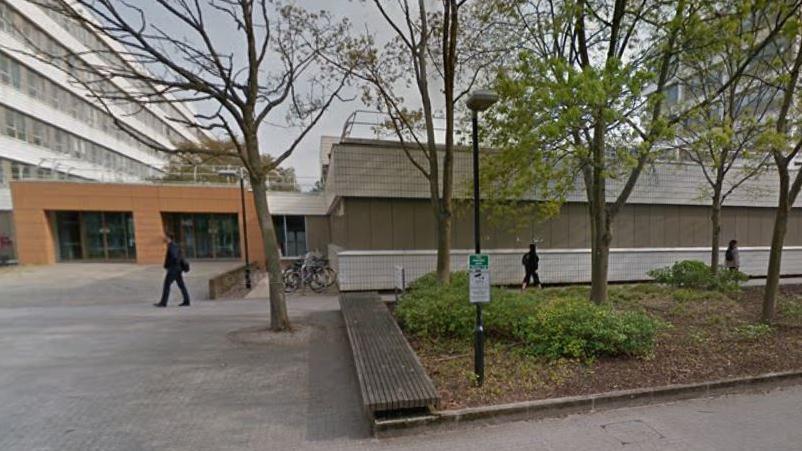University closes building over concrete fears

A single-story humanities block will remain shut as a precaution
At a glance
The university has closed its humanities building as a "precaution" after unstable concrete was found by surveyors
Mitigation measures are in place after the concrete, known as Raac, was also identified in two other buildings
The university said more than 500 of its buildings had been surveyed
A spokesperson added there was "no immediate risk" and apologised for the disruption
- Published
The University of Warwick has closed a building on its campus after finding crumbling concrete.
Schools and public buildings across the UK have been affected by the discovery of reinforced autoclaved aerated concrete, known as Raac, a material which can become less stable over time.
A single-story humanities block at the university's Coventry campus will remain shut as a precaution while more tests are carried out.
“We’re sorry for the disruption this will cause to a small number of people," a spokesperson said.
Raac was identified in three campus buildings after a survey of more than 500, the university confirmed.
Surveyors also found it in Butterworth Hall and part of the science block D engineering hall.
Both buildings remain open with "mitigation measures" in place, the university added, since the concrete is not considered to pose any "immediate risk".
"Their roofs have been assessed to be in good condition," the spokesperson said. “They will both be subject to regular reviews and inspections."
New government figures show 174 English schools have been affected by Raac.
Related topics
See also
- Published19 September 2023

- Published19 September 2023

- Published19 September 2023
